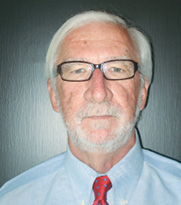Once the dealer and sales manager acknowledge the importance of monitoring their departmental sales mix as well as the sales mix between their new and used equipment sales, as outlined in the previous two columns, then it would behoove them to turn their attention to the subject of turnover.
Turnover can be defined as the relationship that exists between an asset and its corresponding cost of sale and, as such, it is the merging of balance sheet data with data from the profit and loss statement. More specifically, a turnover measures the frequency in which specified assets generate sales and is a reflection of both managerial acumen and dealership efficiency.
In an equipment dealership, a turnover ratio is manifest in the following ratios: total equipment turnover, used equipment turnover, new equipment turnover, parts turnover, accounts receivable turnover, and a work-in-process turnover. Each of these has an incredibly powerful impact on a dealership’s cashflow. A high turnover is usually associated with a management team committed to generating sales at a low cost while low turnover ratios generally indicate either a less than desirable level of sales or a need to reduce unproductive assets.
Each of the aforementioned turnovers is similar in that they are calculated by dividing a profit and loss statement figure by its counterpart from the balance sheet. While historically, turnovers were calculated by using “year-end” numbers, contemporaneous managers interested in acting quickly and decisively want to see what their turnover is on a monthly basis.
Calculating a monthly turnover will require the user to “annualize” the numerator that is derived from the profit and loss statement. Profit and loss statement numbers evolve over time while numbers from the balance sheet, which will make up the denominator in the turnover calculation, represent a point in time.
The simplest approach for annualizing the turnover would be for users to formulate an “on-going” calculation using a series of rolling 12-month numbers. These numbers are calculated by continually averaging the last 12 months of data for both the cost of sales and the designated asset. This calculation actually provides a “truer” picture of turnover as the seasonality of the business is “smoothed” out of the equation.
For the sales department, it is imperative that both the new and used equipment turnover be calculated on an ongoing basis. Ideally, dealers should strive to maintain a new equipment turnover of at least three while the used equipment turnover should exceed 4.
The used equipment turnover is one of the most critical indicators of a dealership’s cashflow and should be continually in balance with the dealerships wholegoods sales mix (see Part 1 of this series, Farm Equipment, Oct./Nov. 2013). Thus, as the dealership’s wholegoods sales mix increases, the dealership’s used equipment turnover must similarly increase.
Unfortunately, this has not been the case for the average North American equipment dealer. Using the data from the annual “Cost of Doing Business Study,“ the following table illustrates that while dealers have consistently increased their wholegood sales for the 3 year period beginning in 2010, their used equipment turnover actually decreased in 2012 after increasing in 2011.
More than anything else, this table is a harbinger for the “Gathering Storm Clouds,” that was the focus of my September 2013 column. Dealers simply cannot continue to increase their wholegood sales as a percent of total dealership sales without significantly increasing their used equipment turnover and still expect to generate the necessary cashflow to sustain an on-going operation.
The table below illustrates the dilemma that many dealers find themselves in as a result of the end-users insatiable quest for newer and pricier equipment and the manufacturers focus on using volume bonus as a carrot to move more and more equipment.
|
2010 |
2011 |
2012 |
|
|
Wholegoods Sales Mix |
74.96 |
77.59% |
78.25% |
|
Used Equipment Turnover |
2.23 |
2.75 |
2.59 |
There is no easy panacea except for a plan of action that will gradually reduce the dealer’s dependence on new equipment sales and the concomitant volume bonus while simultaneously changing the focus and philosophy of selling machines on price to one where product support and value-added selling take center stage. Those who accept the challenge will be victorious while those who continue their present course will find themselves on the “ash heap of history.”






